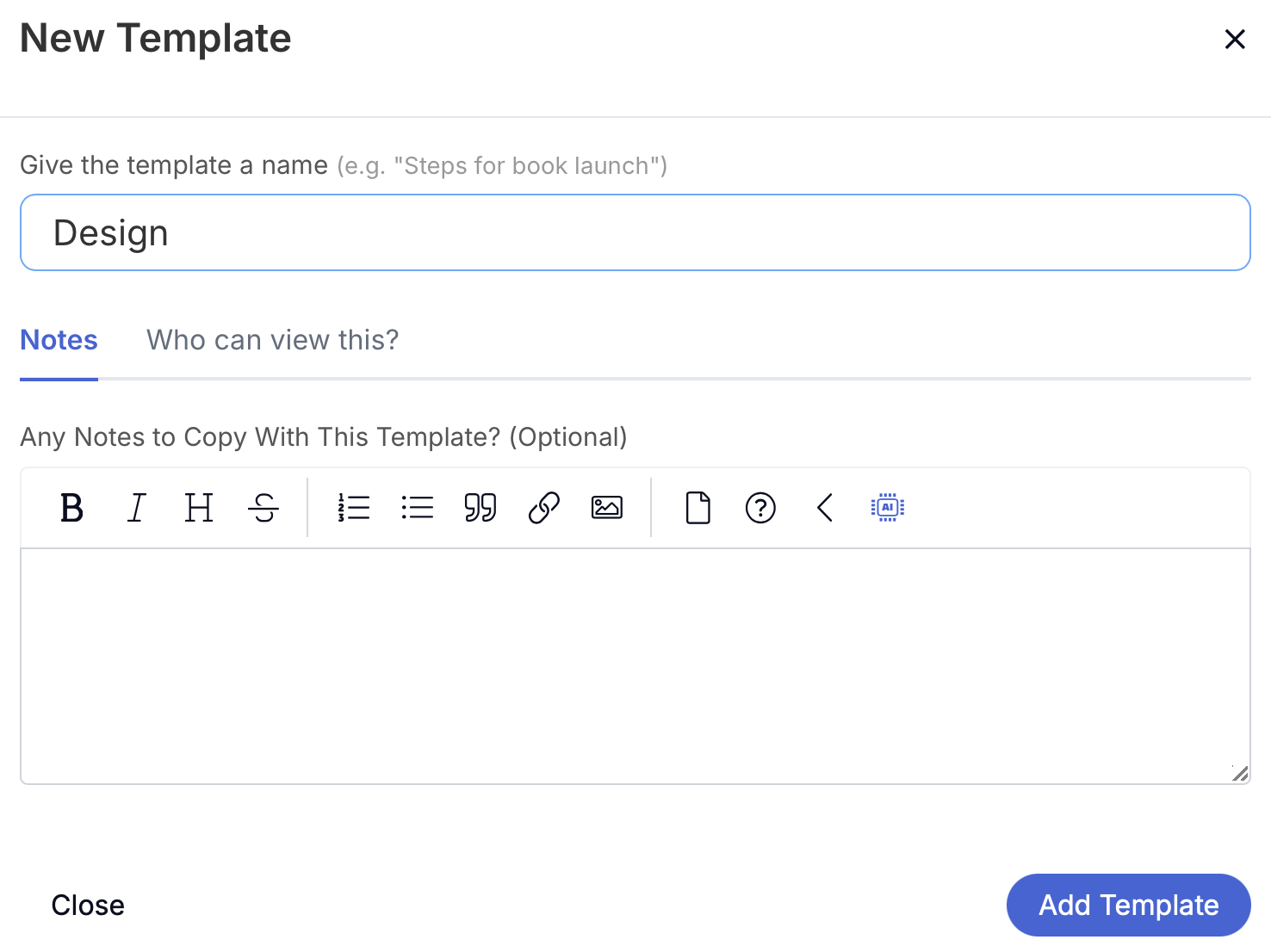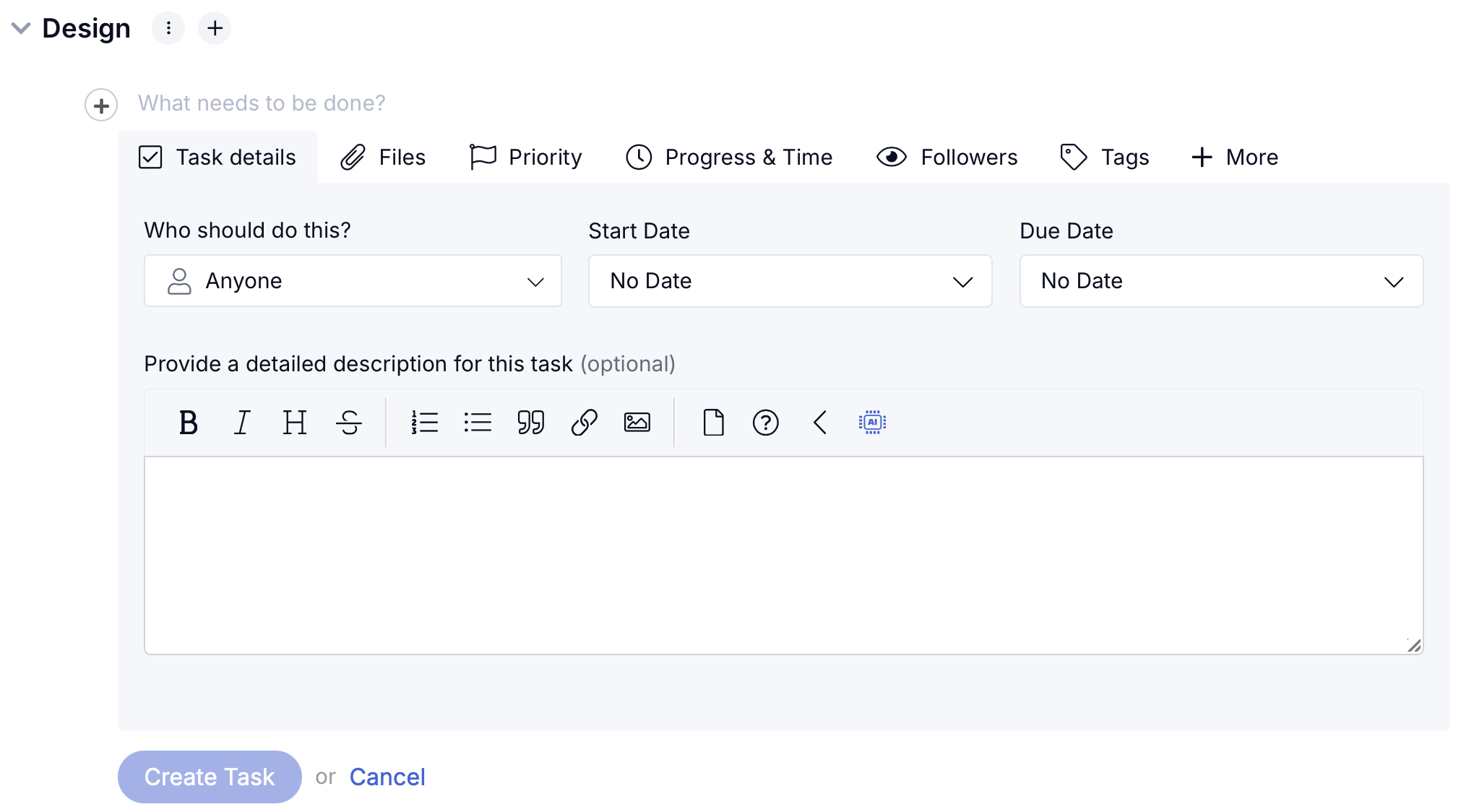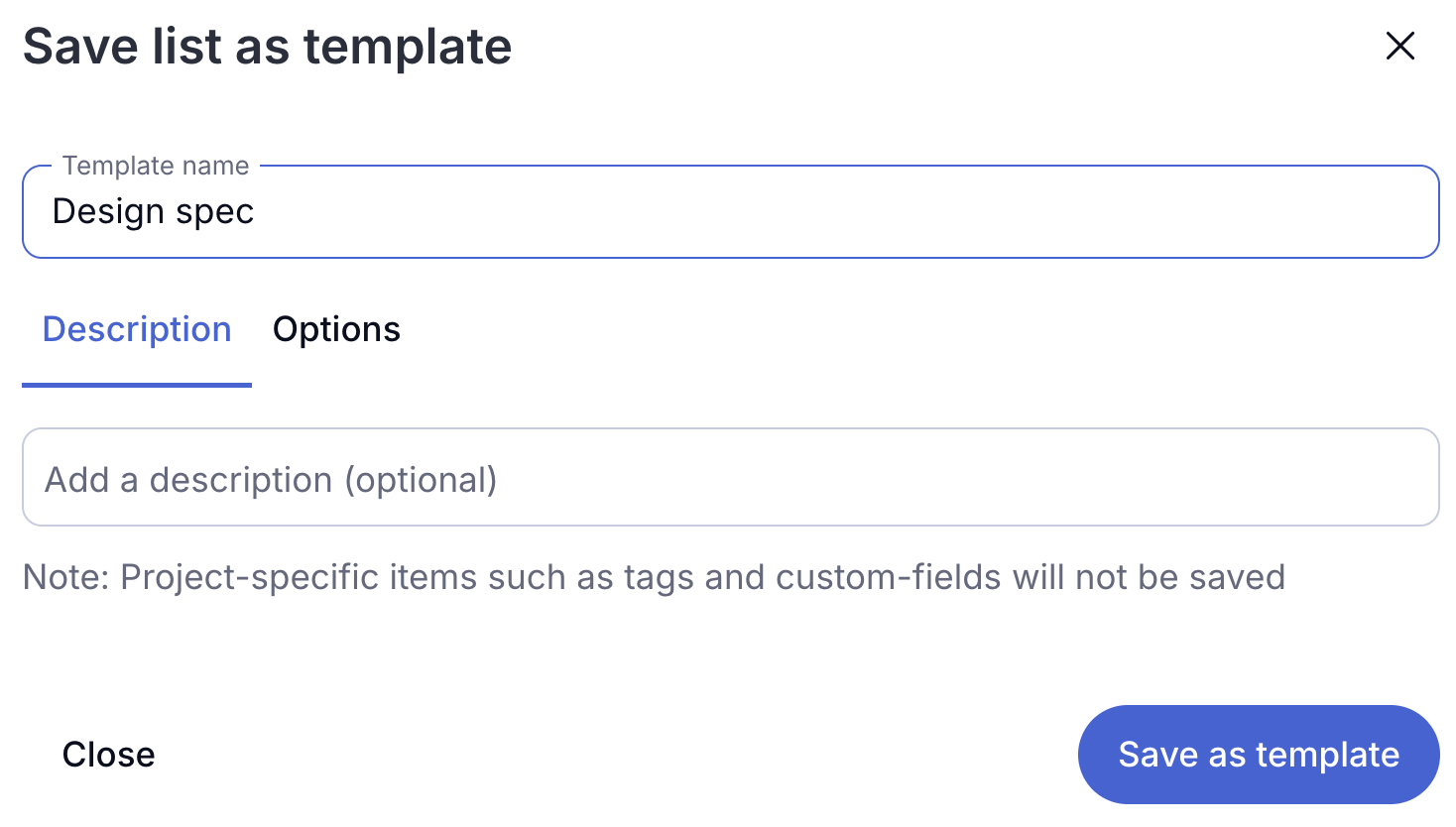✔ Available
on
all subscriptions.
| What | Task templates
are like
placeholder task lists for tasks
you're likely to use repeatedly.
Create a template, then apply it
any time you need those tasks on a
project. |
| Why |
|
| Who |
|
| When | Any time you have a group of
tasks that you're going to use
on multiple projects. Create a
template with those tasks,
then apply it each time you
need to on a project. |
| What | Task templates
are like
placeholder task lists for tasks
you're likely to use repeatedly.
Create a template, then apply it
any time you need those tasks on a
project. |
| Why |
|
| Who |
|
| When | Any time you have a group of
tasks that you're going to use
on multiple projects. Create a
template with those tasks,
then apply it each time you
need to on a project. |
Create a task
template
Step 1:
Access templates
- Click your profile icon in
Teamwork.com's main navigation menu.
- Select Settings.
- Switch to
the Templates tab.
- Scroll to Task
templates.
- Click Set-up. Already have some templates? Click Edit instead.

💡 You can also access
templates from the task list
options menu ( )
in
a project:
)
in
a project:
 )
in
a project:
)
in
a project:- In
List or Table view's top
right.
- On
an individual task list heading's
right.
Step 2:
Enter the template's details
- Click Add Template in the
view's top right.
- Enter the template's name.
- Add a description or any relevant notes.

- Choose privacy (if necessary). This determines who can access the template in a project.
- Switch to the Who can view
this tab.
- Click Everybody on the
project.
- Check the boxes on the left of each
person or company whose members you
want to grant access to.
- Click Update.
- Click Add Template.
📝 This does
not affect the privacy of task lists
or tasks
created from the template.
Create tasks in
the template
Step 1: Create a
task
- Scroll to the task template.
- Click Add a task. Alternatively, click the + on the template heading's right.
- Enter the task's name.

Step
2: Choose assignees
- Click Anyone under Who
should do this to
update the task's
assignees.
- Choose from:
- Anyone: Keep the
task unassigned, aka
assigned to "Anyone" when
this template is used on a
project.
- Single assignee: Click a user's name to
assign the task to that
individual.
- Multiple
assignees: Click Add
More, then use the
checkboxes to assign the
task to one or multiple
individuals, teams, or
companies.
Click Update.
- Choose
later: Set a
placeholder assignee role
(ex. "Design"). When the
template is used on a
project, you'll be
prompted to assign
specific project members
to the task.
Step 3: Set
dates
Task dates work differently
in templates — they use days (ex. day
1, 3, 5) rather than specific
dates.
When the template is used,
the dates are set counting from the
day you use the template (aka the
anchor date).
Examples:
- You set the
template task's start date
as Day 1 (Today) — the new task's
start date will be the current date.
- You set the template task's start date
to Day 5 — when you use the template
on a project, the new task's start
date will be the current date + 4
days.
Step 4: Set task
properties
Apply different properties
(ex. priority, estimated time, tags,
repeats, reminders) or attach files to
the template task.
- Template
tasks must
have a due
date before reminders can be
set.
- When you use the template on
a project, the new task created
inherits the template task's
properties.
Step 5: Finish
the setup
Apply different properties
(ex. priority, estimated time, tags,
repeats, reminders) or attach files to
the template task.
- Review the task's details.
- Click Create
Task.
Save an existing
task list as a template
Have a task list on a
project that would be relevant to
future projects? Save it as a
template.
- Click Jump to in
Teamwork.com's main navigation
menu.
- Search for and select a
project.
- Switch to the
project's List or Table view.
- Scroll to the relevant task
list.
- Click the ellipsis (
 )
on the
task list heading's
right.
)
on the
task list heading's
right. - Hover
over Templates.
- Select Save as template.
- Enter the template's name.
- Add a description (optional).

- Switch to the Options tab.
- Check the boxes beside each
setting you want to apply.
- Make this template private to
your company.
- Include completed tasks.
- Click Save as
template.
A template is saved to the
task templates area, populated with
copies of the original list's
tasks.
⚠️ Project-specific items such as tags
and custom-fields are not carried over to the
template.
Best
practices
- Organize: Leverage templates right
from the outset — use templated task lists
to group common repeat work into relevant
subsets (e.g.
based on department, or by
micro-goal), then build out new projects
from the templates.
- Increase efficiency: Apply task
properties (ex. tags, priority, estimated
time) as you create templates, reducing
the amount of maintenance needed when
launching new task lists from the
template.
- Build on existing processes: If you
already have task lists on projects that
work effectively, save them as templates
and save yourself (and your team) from
having to build them from scratch each
time.
